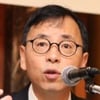China’s current per capita income is a quarter to a third of leading Western countries’. The difference is the tailwind. The Chinese government can make many mistakes without derailing the growth trend.
China’s economic model does have far-reaching political consequences. Let’s dive into the first part – the fact that it is Chinese. Chinese civilisation is all about uniting people around the political leadership. Starting from the first emperor of China
, it has been about making all the people in a vast continent one and the same.
The way to do it is to control thought, either by burning books or enticing the best and brightest to memorise the right things for exams to become mandarins. In the modern context, it means capital cannot play a significant role in education or the media.
The recent clampdown on
in the name of preventing monopolies is part of that. The government will control all content creation.
The second part is the central role of political authority in all aspects of economic life. Big private businesses are a new element in Chinese society that could become alternative power centres, derailing the traditional Chinese hierarchy.
Inserting
into businesses is done to ensure the party and government still control anything big. It is likely that, after the founders leave, big private companies will be subject to government influence in selecting senior management, similar to state-owned enterprises.
The market part comes naturally to Chinese culture, and resource optimisation has always been part of Chinese civilisation. When people have opportunities, they will make the most of them.
China’s trade with the West lasted until world wars and turmoil made production too costly. China’s trade surplus with the West now is really a restoration of the norm.
Hence, the market naturally brings prosperity to China.
that some associate with market competition is not so serious in China because most Chinese are quite competitive. For example, the divide between white-collar and blue-collar workers in much of the world is not as bad in China.
So many parents push their children to become
that China has an oversupply of them and a shortage of blue-collar workers. Hence, wages for construction workers and domestic helpers are much higher than those for graduates of elite colleges.
Because Chinese are so competitive, great wealth creation is often tied to government power that distorts the market, not market forces per se. China’s
, for example, is largely policy-driven.
The government’s monetary and fiscal policy and political processes behind access to credit have powered the distribution of property. Those with access to credit could store up land early to accumulate great wealth.
China’s
gave old urban residents the privilege to reap benefits from resettlement for urban development. These two factors account for much of the wealth inequality today.
The socialist bit of the Chinese model is in focus because of the policy momentum for the third round of distribution. The suspicion that great wealth has been acquired through mandarin-merchant collusion – the age-old Chinese business model – makes it popular.
In the imperial era, China was quite egalitarian. Otherwise, it could not have fed hundreds of millions on so little land. Great wealth was mostly acquired by the mandarin class through corruption. A new emperor would sometimes cut off the heads of some mandarins who got very rich under his father’s reign.
That was an efficient way of recycling wealth, but we are not so brutal any more. Now, wealthy people have
to approved charitable foundations.
Is this fair? China’s wealth accumulation over the past four decades has been built
. China has invented no commonly used products, in sharp contrast to Japan. Big wealth has often been acquired with the help of powerful mandarins, or just luck.
Hence, taking that wealth away has few consequences in terms of efficiency. Donations, the modern equivalent of cutting off heads at the wet market at the crack of dawn, seem like a reasonable compromise.
The China model appears to have these key elements: state capital occupies strategic heights; private capital takes the competitive bits; successful big private companies become subject to tight state control; the small enterprises that employ most people are left alone; great wealth is recycled back into society; and, nobody touches the business of thought control but the government.
For better or worse, this is the future.
Andy Xie is an independent economist


